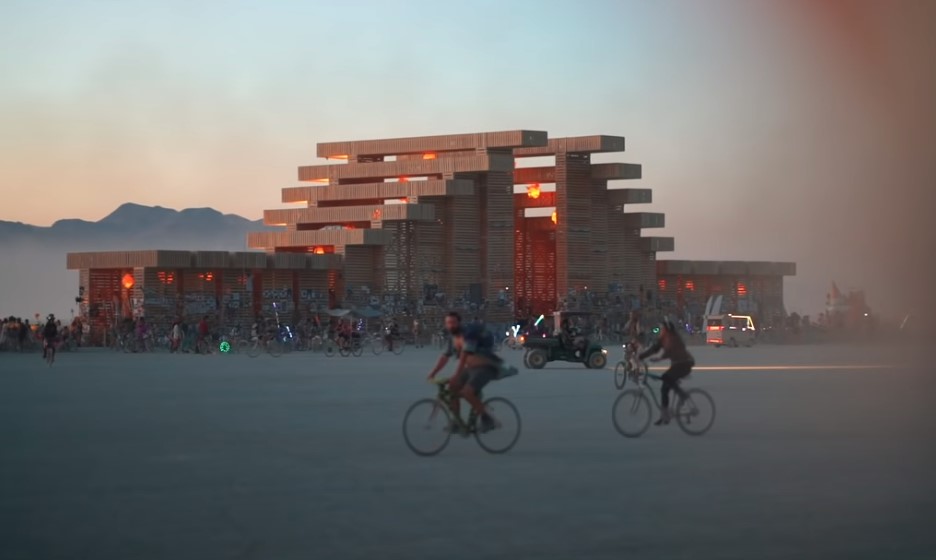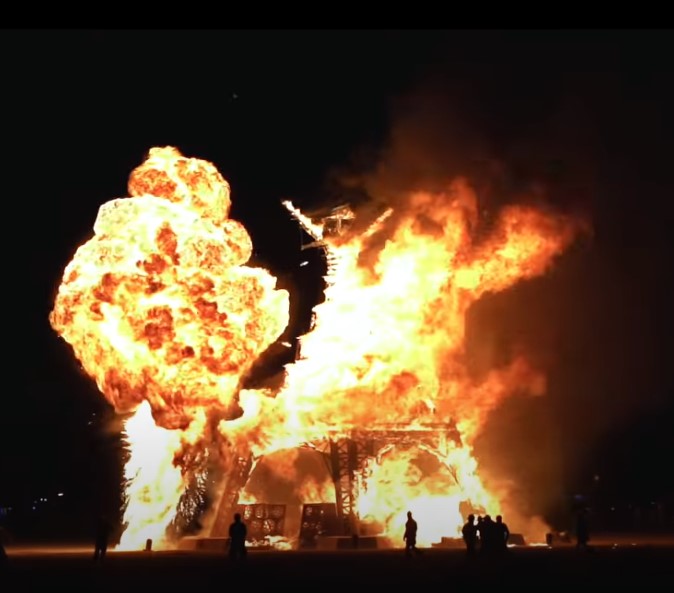Humankind has since time immemorial had two categories of people: those who accept and even embrace reality and those who rebel against it and attempt to flee it or remedy it. Perhaps it is a psychological thing: there are individuals who can cope with the world as it is, whatever may happen, and individuals who cannot and need to take the sabbatical every now and again.
Every year in ever increasing numbers young, professional, mainly white Americans and Canadian zero in on Black Rock City, Nevada, somewhere in the Black Rock Desert, north of Reno, in vehicles turned into juggernauts to spend their time – eight days – pleasing themselves, doing yoga, listening to music, sharing and gifting, as they say, and bowing down to all the present-day forms of superstition. The seemingly ad-hoc created community has its ten commandments called principles of burning man and these are:
1 radical inclusion (everyone is welcome);
2 gifting (without expecting reciprocity);
3 decommodification (no commercial sponsorship);
4 radical self-reliance (reliance on the inner resources of one’s self);
5 radical-self expression (meaning determinable by every individual);
6 communal effort (cooperation, collaboration and – to quote the third synonym used on the Burning Man website: interaction);
7 civic responsibility (compliance with the law);
8 leaving no trace (cleanliness of the environment);
9 participation (being through doing); and
10 immediacy (immediate experience).

The rules are rather vague and lend themselves to a broad interpretation. Pictures speak louder than words, though. The youngsters gathered in Black Rock City simply enjoy themselves through dance and play and music. They arrive in droves, in an orderly manner, settle around the large figure of a man which is to be burnt at the end of the festivities, and try to impress the others with their looks and behaviour. It evokes the pictures of Flower Power and – considering that the initial event took place in 1986 San Francisco – of Scott McKenzie’s song San Francisco. The human motley gathering also resembles gay parades. In 2019, the place – referred to as playa – was made vibrant with almost 80.000 participants: influencers, celebrities and Silicon Valley elite. Only the first few initial events were free of charge. Later, tickets began to be sold and the price for being admitted to participate in the festivities and the burning of a human effigy at the summer solstice would rise from $15 to $500 and more.
Since 2000, also a temple has been erected, each time dedicated to a different concept like as joy, hope, transition, or whollyness.

Are we witnessing a nascent cult? A new movement? Is it as spontaneous as it is made out to be? The eight-day desert city makes one think about communism and yet access entails expenditure. The acts of burning an effigy of a man make one think about pagan sacrifices. The presence of a temple endows the whole with a religious varnish. The sight of the mutant cars and people dressed in all manner of extraordinary clothes might be taken straight from a Mexican festivity or from India. Participants are encouraged to express themselves the way they wish but evidently it is a gathering of people of a very similar psychological profile. As said earlier, the celebrities, the artists, the influencers, generally affluent people set this group apart from the common citizens. One day they are going to be the ruling elites of the Western world. What kind of world will it be then? Is the inclusion – the very first principle of the event – to be equated with the inclusive capitalism, the brainchild of Forester de Rothschild? The top managers of the world have managed to recruit the Vatican for the creation of the new economic and societal model: are the burning man events (going to be) another part the same process? Why, be it the Vatican City or Black Rock City, they both revere and call for diversity, inclusion and Mother Earth. The common denominator is already there, for all to see.





